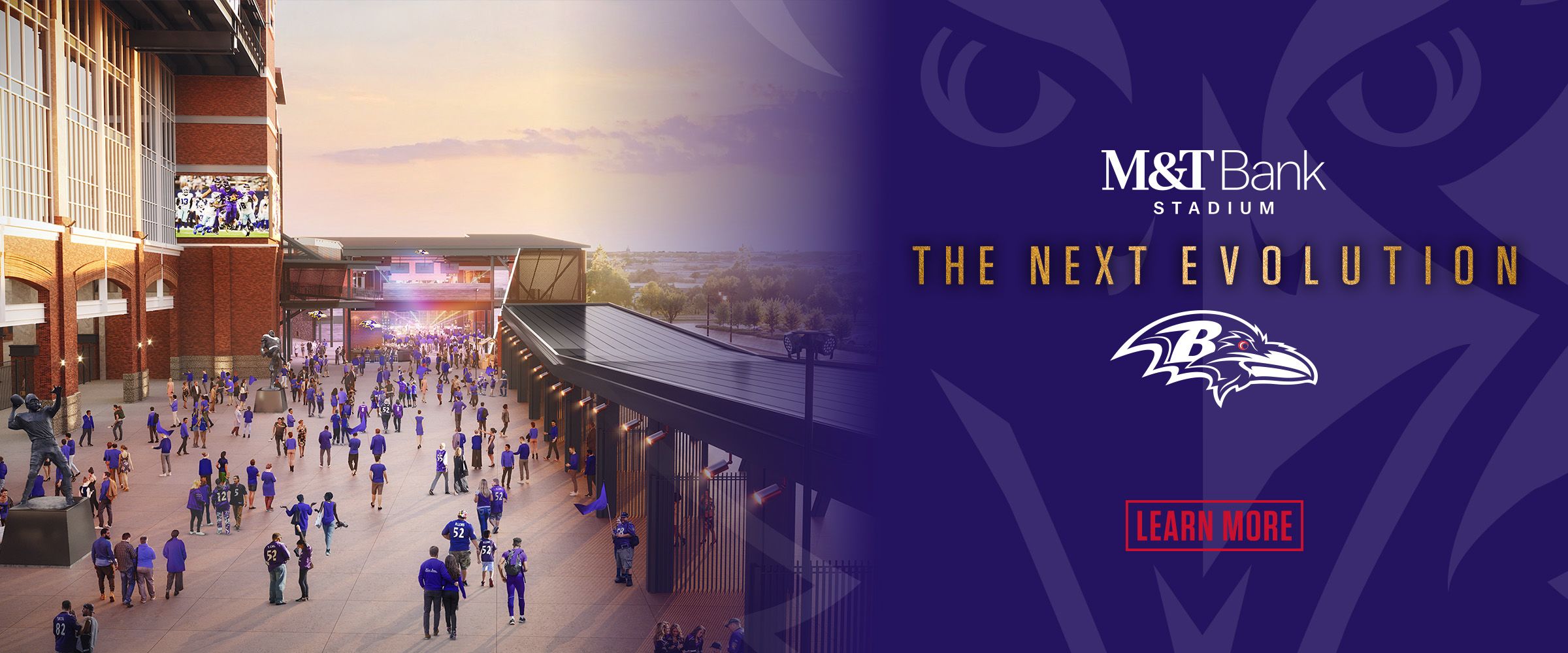Just when Baltimore thought it was done arguing about wide receivers, here we are again.
The trade of Marquise "Hollywood" Brown has left the Ravens with an opening and Baltimore sports talk spinning once again. The latest take is the Ravens have a “crisis” on their hands.
There are two essential questions here. Do the Ravens need to add a wide receiver? If so, how much should they spend to do it? To the first, the answer is yes. To the second, it's not much.
The Ravens need more depth and somebody that could start in a pinch. Right now, they have four wideouts with NFL experience. If any one of them (especially Rashod Bateman) were to go down, Baltimore would be in a tight spot.
However, the Ravens don't need to spend a lot to find that depth. It's time to go thrift shopping.
Baltimore has shown it doesn't need to have much wide receiver production for Lamar Jackson to thrive and the offense to prosper. In 2019, Baltimore's revolutionary ground game and Jackson's comfort led the highest-scoring offense in the league. The Ravens didn't have a single wide receiver hit 600 yards.
Jackson himself told General Manager Eric DeCosta what would help him most was an improved offensive line. That's been accomplished already.
When Jackson feels comfortable and is facing more third-and-3s as opposed to third-and-8s (by virtue of a better running game), he is more MVP than magician. In short-yardage situations, anything could come the defense's way as opposed to Jackson being required to pull a rabbit out of his hat to move the chains, as we saw last year.
The Ravens also have some intriguing options to gobble up Brown's snaps. Bateman is a first-round pick who can truly emerge as a No. 1 wide receiver. He made plays at every level last year and brings run-after-the-catch ability.
It seems every time Devin Duvernay has the ball in his hands, good things happen. He's sure-handed, speedy and tough. Maybe Duvernay's speed doesn't scare NFL defenses as much as Brown's did, but with a 4.39 40-yard dash, it's only a matter of time before Duvernay wakes safeties up.
Similarly, James Proche II has made the most of his opportunities as a receiver. He caught 16 of 20 targets last season. Proche could certainly fill the niche of a shifty slot receiver who can work on the outside and move the chains. Baltimore also liked what it saw from rookie Tylan Wallace last season, evidenced by his elevated offensive snap count down the stretch.
Nobody is saying these guys are bona fide NFL stars yet. Duvernay went to the Pro Bowl last year, but as a returner. They're all young, ascending talents.
We can't complain about the Ravens' supposed inability to draft and develop wide receivers if we short-circuit their development. Wide receiver groomers Tee Martin and Keith Williams drew widespread acclaim last offseason. Let's see the fruits of their labor.
In years prior, the Ravens justifiably hadn't seen enough early flashes of promise from drafted wide receivers to stave off the addition of a proven veteran. This time around is a different story. It's time to let the youngsters spread their wings.
It would be too simplistic to believe the Ravens are going to run back their 2019 offense just because this year's unit looks more like it on paper than the last two creations.
Despite the offensive line upgrades this offseason, the 2019 offensive line was still probably better. It also didn't have a pair of running backs coming off season-ending knee injuries. Plus, Baltimore's historic run-first offense led by Jackson's legs was still pretty fresh back then. Now, everybody has seen it – although there will be more wrinkles this season.
But one could argue that the current lineup of Ravens wide receivers is already better than the one Jackson had in 2019 with Brown, Willie Snead IV, Seth Roberts and Miles Boykin. The Ravens' top pass catcher, tight end Mark Andrews, is definitely better than he was three years ago. And Jackson is a better passer, and needs to continue to show it.
The Ravens would still love to have Brown and Bateman as their 1-2 punch on the outside, but then they wouldn't have an upgraded center with Tyler Linderbaum. DeCosta even had his eye on a wide receiver prospect he would have taken at pick No. 14, but then they wouldn't have gotten a steal with Kyle Hamilton. Baltimore could have taken a wide receiver, such as Georgia's George Pickens (Steelers), in the second round, but then we'd all be clamoring for pass rush help instead of eagerly awaiting David Ojabo's debut.
If you're drafting or spending on a wide receiver, it comes at the expense of improving something else. You can't have it all under the salary cap. And in the Ravens' run-heavy offensive scheme, it makes perfect sense that wide receiver would rank lower on the priority list. Baltimore traded Jackson's good friend and top wide receiver, but they gave him a better offensive line in exchange, which is what he asked DeCosta for.
With not much salary-cap space remaining and cornerback and outside linebacker still needing attention (and money), the Ravens would be best served finding a cheaper veteran option that's not going to stand in the way of Duvernay, Proche and Wallace developing, but rather stand in conjunction with them as a complementary piece that could be relied upon for a larger role if needed.
Maybe Jarvis Landry could have been that, but he might have been more expensive than the Ravens wanted, plus he wanted to go back home to New Orleans. But other wide receivers will pop up if Baltimore doesn't like the current options on the market.
All it takes is some patience, which Ravens fans don't seem to have much of when it comes to wide receivers. It's understandable given Baltimore's track record, but it appears trust will be required once again.



















